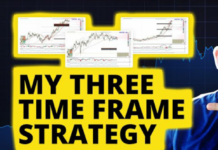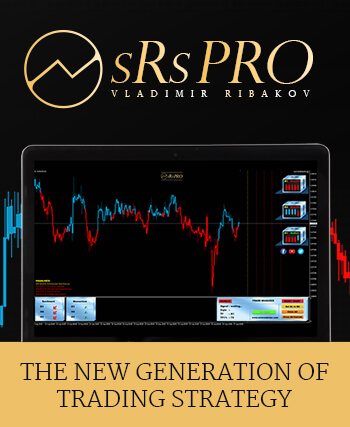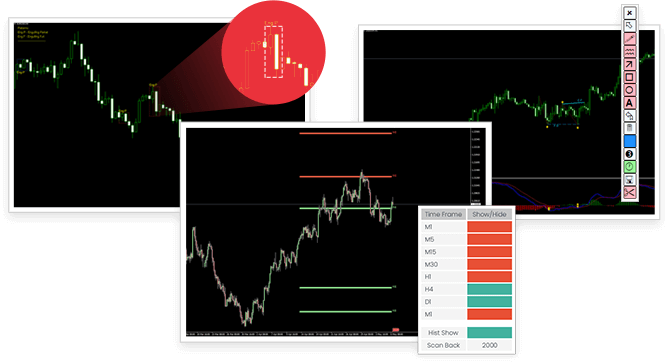
Head and shoulders pattern is one of the favorite trading patterns of all technical traders. The head and shoulders is a reversal pattern for both bearish and bullish trends. It is quite easy to spot and the success rate is promising with above 80% win ratio making it one of the most reliable chart patterns. At the end of a bullish trend we have Head and Shoulders and at the end of a bearish trend we will find Inverse Head and Shoulders.
IMPORTANT NOTE: Remember that in reality the pattern will almost never be perfect. In time you will get used to recognizing it and filtering the good ones from the bad ones, it just takes time and practice.
Head and Shoulders Pattern – Identification

As the name suggest the pattern looks like a head and two shoulders. The regular head and shoulders pattern would predicts the end of a bullish trend and it is very likely that the price would fall after the pattern has formed and broken down.
It is important to mention that the left and right shoulders should look approximately the same (height, number of bars that it took to form etc)
And this is how the Inverse Head and Shoulders look like:

Head and Shoulders Formation
Head and Shoulders
- Left shoulder: Price declines and moves higher.
- Head: another Decline occurs to a lower level.
- Right shoulder: Price then moves higher and moves back lower, but not as low as the head.
Inverse Head and Shoulders
- Left shoulder: Price inclines and moves lower.
- Head: another incline occurs to a higher level.
- Right shoulder: Price then moves lower and moves back higher, but not as high as the head.

Here is a live example of a POTENTIAL inverse head and shoulders that is being formed at the moment. This is Crude Oil’s chart H4 time frame. A break above the neckline should open the doors for the bulls.
Head and Shoulders – The Neckline
We have went over the shoulders and the head. Now let’s have a closer look at the neckline. The neckline is drawn by connecting the the point where the head starts and where the head ends. Logical right? Let’s have a look at the examples again:
 and of course the inverse head and shoulders:
and of course the inverse head and shoulders:

Why does the Head and Shoulders Pattern form?
All technical patterns form for a reason. The reasons is the psychology of the market participants. Greed, fear, hopes, optimism, pesimism…these are all key factors to where the price would go next. Head and shoulders pattern is a classical story for the war between bulls and bears.
The initial peak and the decline that follows afterwards, perfectly represent the momentum of the prior bullish trend. In effort to sustain the up movement as long as possible, bulls push the price back up past the initial peak to reach a new high (the head). At this point, it is still possible that bulls could reinstate their market dominance and continue the upward trend.
However, once price declines a second time and reaches a point below the initial peak, it is clear that bears are gaining ground. Bulls try one more time to push price upward, but succeed only in hitting the lesser high reached in the initial peak. This failure to surpass the highest high signals the bulls’ defeat and bears take over, driving the price downward and completing the reversal.
In other words “Going once, going twice…sold!” Trend is now reversing.
Trading the Head and Shoulders Pattern
First of all don’t make the biggest mistake many experienced traders do – trade a partially formed head and shoulders as it was already completed. It is extremely important to wait for the pattern to develop and complete before trading it. Many times a pattern that seems to be promising turns out to be something completely different!
Entry
There are two types of entries for the head and shoulders pattern. Probably the more common way is to wait for the breakout and enter right away. Some would wait for a close other would enter at a simple breakout. This method of trading is a bit more aggressive.
The second way to enter requires more patience from the trader but that patience brings rewards! However there is a chance that you will miss the trade completely. The more conservative entry is waiting for a pullbacks after the breakout. One of the greatest benefits is probably that improved risk reward ratio that you will get from such entry as opposed to the more aggressive entry.
Target
We simply measure the distance from the highest point (or the lowest point) in other words the head to the neckline. Replicate that measurement from the point where the breakout occurred.
Stop Loss
Traditionally the stop loss is placed above (in a regular HnS pattern) and below (inverse HnS) the right shoulder. In the example above we have inverse head and shoulders, hence the stop loss is placed below the right shoulder.
Notice how the 3 types of entries would’ve given you different risk reward ratios. Ok in this example Aggressive Entry 1 and Conservative Entry would be probably around the same level but when compared to Aggressive Entry 2 we see a considerable difference. Using the conservative entry we would get almost 1:3 risk:reward ratio which is very good.
Things to consider when trading the head and shoulders pattern
- Patterns are subjective. What seems to be a head and shoulders for one trader may not be good enough for another one who will dismiss the formation of being a HnS pattern.
- Imperfection of the pattern will sometimes cause the targets/stops to be very large, resulting in huge targets or huge stop losses. Often these patterns will fail.
- Patience is required. Don’t try to predict what will happen and whether what you are seeing at the moment will turn out to be a head and shoulders pattern. Wait for it! There are plenty of opportunities out there. No need to force things and guess. It is your money after all.
- Use volume indicators to confirm the breakout. If you don’t want to wait for a pullback (conservative entry) use breakout indicators. If you see a decrease in the volume prior to the breakout, followed by huge spike up in volume once the breakout happens, it is a pretty good indication that the trend is indeed reversing.
I hope that would get you started or even a bit further! Really the most important part is to wait for the pattern to develop. Draw the neckline and choose how you will enter beforehand.
You have something to say about the head and shoulders pattern? Please use the comment section below – thank you in advance!
If you like it – share it!
Yours,
Vladimir




















